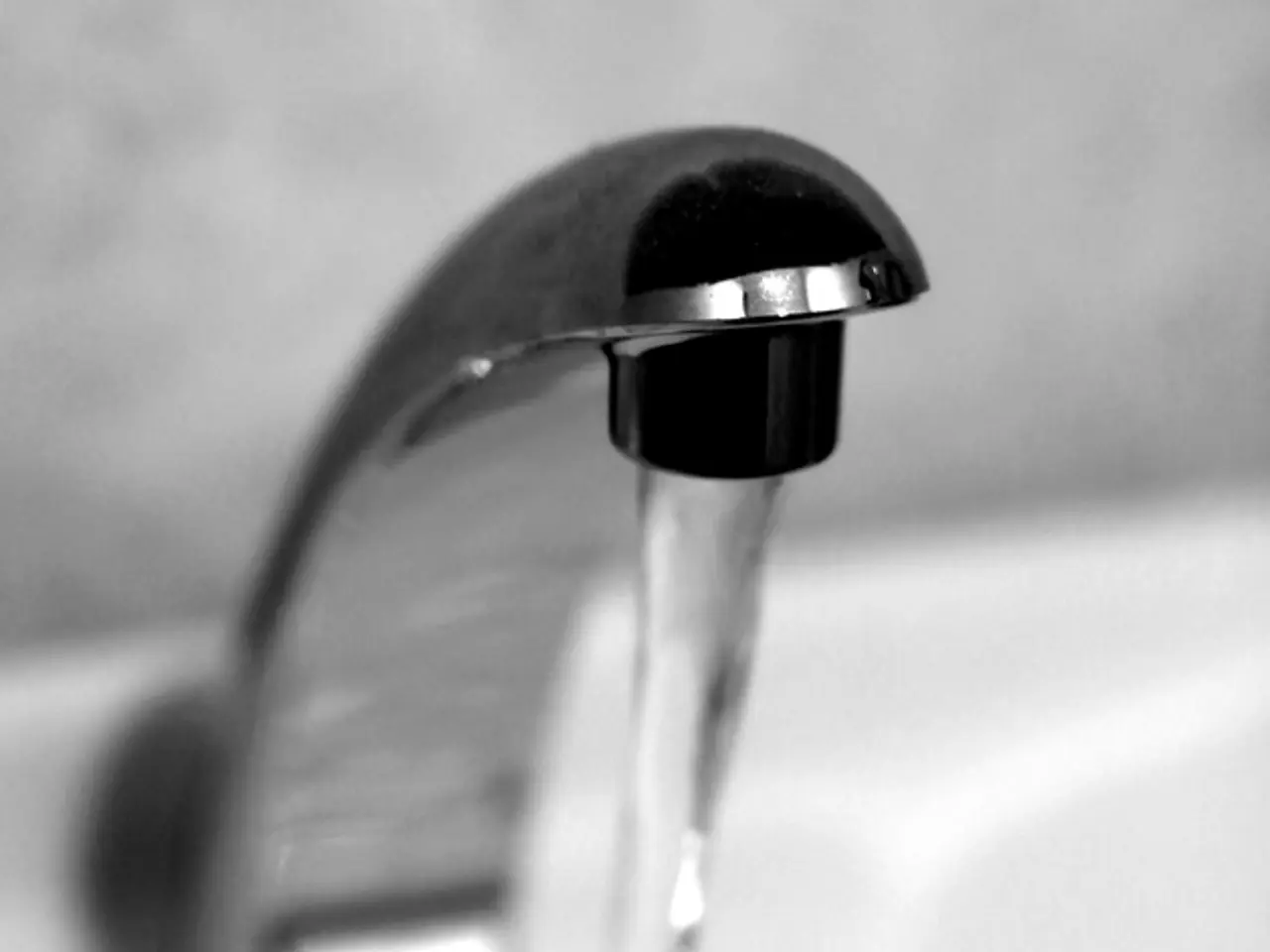The genuine price of a cup of water: exposing the hidden expenses
In today's world, water is a precious resource that many of us take for granted. However, the true cost of a cup of water extends far beyond the direct charges on your water bill.
Understanding the factors contributing to the cost of water is essential for encouraging responsible water use. Awareness of the wide range of factors, from water source and stress factors to indirect operational and infrastructure costs, helps us appreciate the value of water and use it more wisely.
Water sourced from regions experiencing high water stress incurs additional environmental impact costs, which can translate into higher overall costs. This includes both onsite and offsite water consumption impacts weighted by regional water stress factors.
Beyond direct water consumption, the costs of maintaining, operating, and administrating water supply infrastructure contribute to the final cost. These indirect costs include treatment, pumping, distribution, and repair of infrastructure.
Hidden water losses, such as leaking toilets or pipes, mean you effectively pay for more water than you consume. A leaky toilet, for example, can waste over 1,000 litres of water daily, translating to significant additional financial cost beyond the volume measured on your bill.
Water costs can also vary depending on the season or month due to changes in water availability, demand, or regulatory pricing adjustments tied to temporal water stress. State or regional regulatory frameworks and cost adjustments can indirectly affect water costs in those areas.
Investing in robust and well-maintained infrastructure is crucial to keeping water costs down in the long run. Cities in arid regions often have higher water rates due to scarcity and the need for extensive infrastructure. Government subsidies and programs can help offset these costs, ranging from direct financial assistance to infrastructure projects to regulations that control water pricing.
The direct cost of a cup of water is determined by the price per gallon on your water bill. However, beyond the bill, hidden costs associated with water include infrastructure maintenance, environmental impact, and the cost of bottled water.
Bottled water is significantly more expensive than tap water. The price difference is primarily due to factors beyond the water itself, such as packaging, transportation, marketing, and profit margins.
Being mindful of water consumption habits and adopting water-saving practices is essential for reducing environmental impact and controlling water costs. Reducing water consumption at home can lower your water bill, and investing in water-efficient appliances, such as those with the WaterSense label, can help save water and money.
Landscaping for water conservation can also help save water. Using drought-tolerant plants and mulch can reduce the need for frequent watering and save water.
In conclusion, the overall cost of a cup of water is influenced by environmental water stress conditions, indirect operational and infrastructure costs, inefficiencies such as leaks, temporal factors, and location-based economic adjustments, all of which interplay to influence the final effective price beyond just the water meter reading and bill. By understanding these factors, we can make informed decisions about our water use and help ensure that everyone has access to clean, safe water for generations to come.
[1] World Resources Institute (2018) "Aqueduct: The World's Water Stress", https://www.wri.org/aqueduct/ [2] United States Environmental Protection Agency (n.d.) "Water Rate Setting and Cost Recovery", https://www.epa.gov/watersense/water-rate-setting-and-cost-recovery [3] United Nations Development Programme (2018) "Water Scarcity and Climate Change", https://www.undp.org/content/undp/en/home/ourwork/water-sanitation/sdg-6/water-scarcity-and-climate-change.html [4] United States Geological Survey (n.d.) "Water Loss", https://water.usgs.gov/edu/waterloss.html
- In the realm of environmental science, understanding climate-change's impact on water resources is crucial for managing water use effectively.
- The economic aspect of water conservation extends beyond personal-finance considerations, with businesses and home-and-garden industries also benefiting from water-saving practices.
- The price of bottled water often far exceeds that of tap water, not only due to the cost of the water itself, but also due to packaging, transportation, marketing, and profit margins.
- Pursuing education-and-self-development in fields like water management and sustainable practices can help create lasting solutions to water scarcity, promoting a responsible lifestyle.
- By learning about the hidden costs associated with water consumption, such as infrastructure maintenance and environmental impact, we can make more informed choices about our water usage, thereby conserving this precious resource.




